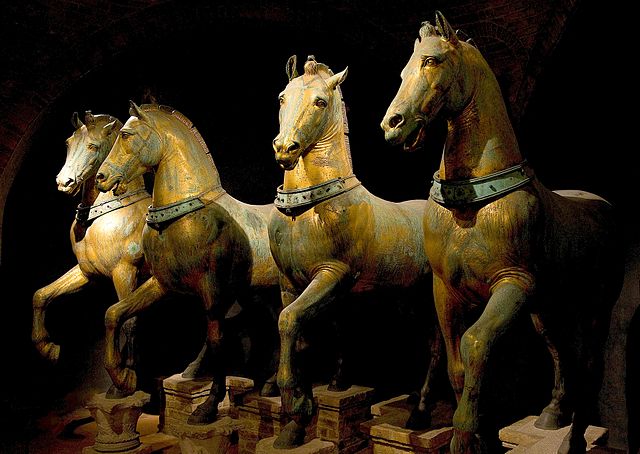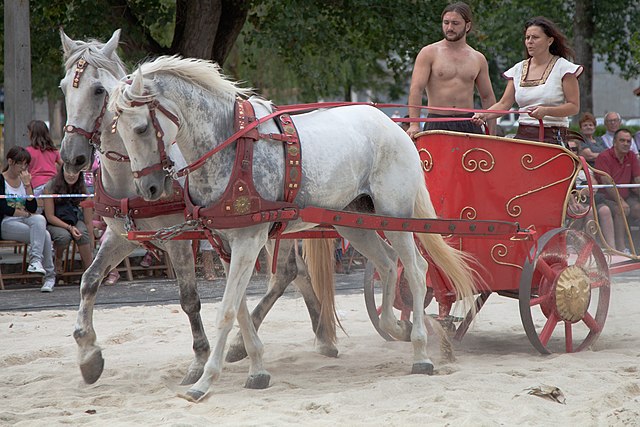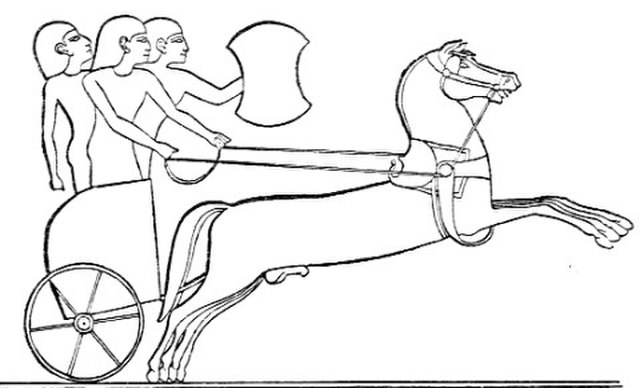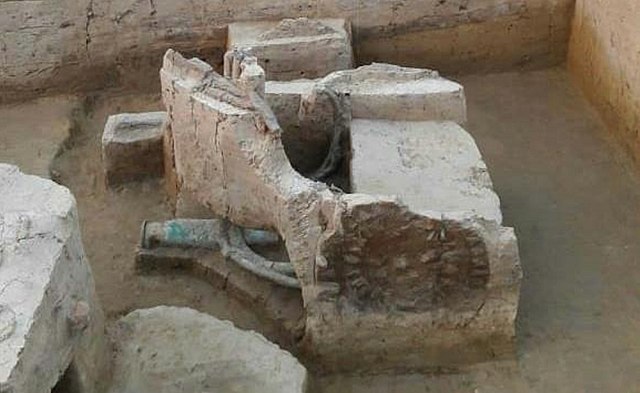A quadriga is a car or chariot drawn by four horses abreast and favoured for chariot racing in classical antiquity and the Roman Empire. The word derives from the Latin quadrigae, a contraction of quadriiugae, from quadri-: four, and iugum: yoke. In Latin the word quadrigae is almost always used in the plural and usually refers to the team of four horses rather than the chariot they pull. In Greek, a four-horse chariot was known as τέθριππον téthrippon.
The Horses of Saint Mark in Venice
Marcus Aurelius celebrating his Roman triumph in 176 AD over the enemies of the Marcomannic Wars, from his now destroyed triumphal arch in Rome, Capitoline Museums, 176–180 AD
Genesis 41:42–43: "And Pharaoh … made him to ride in the second chariot which he had; and they cried before him, bow the knee: and he made him ruler over all the land of Egypt." Miniature from the Paris Gregory, a 9th-century Greek manuscript, Bibliothèque nationale de France
Helios in his chariot, early 4th century BC, Athena's temple, Ilion
A chariot is a type of cart driven by a charioteer, usually using horses to provide rapid motive power. The oldest known chariots have been found in burials of the Sintashta culture in modern-day Chelyabinsk Oblast, Russia, dated to c. 1950–1880 BCE and are depicted on cylinder seals from Central Anatolia in Kültepe dated to c. 1900 BCE. The critical invention that allowed the construction of light, horse-drawn chariots was the spoked wheel.
Reconstructed Roman chariot drawn by horses.
Hittite chariot (drawing of an Egyptian relief)
Copper plated, solid wheeled chariot, discovered Sinauli, c. 1865–1550 BCE
Chariot detail at Airavatesvara Temple built by Rajaraja Chola II of the Chola Empire in the 12th century CE








